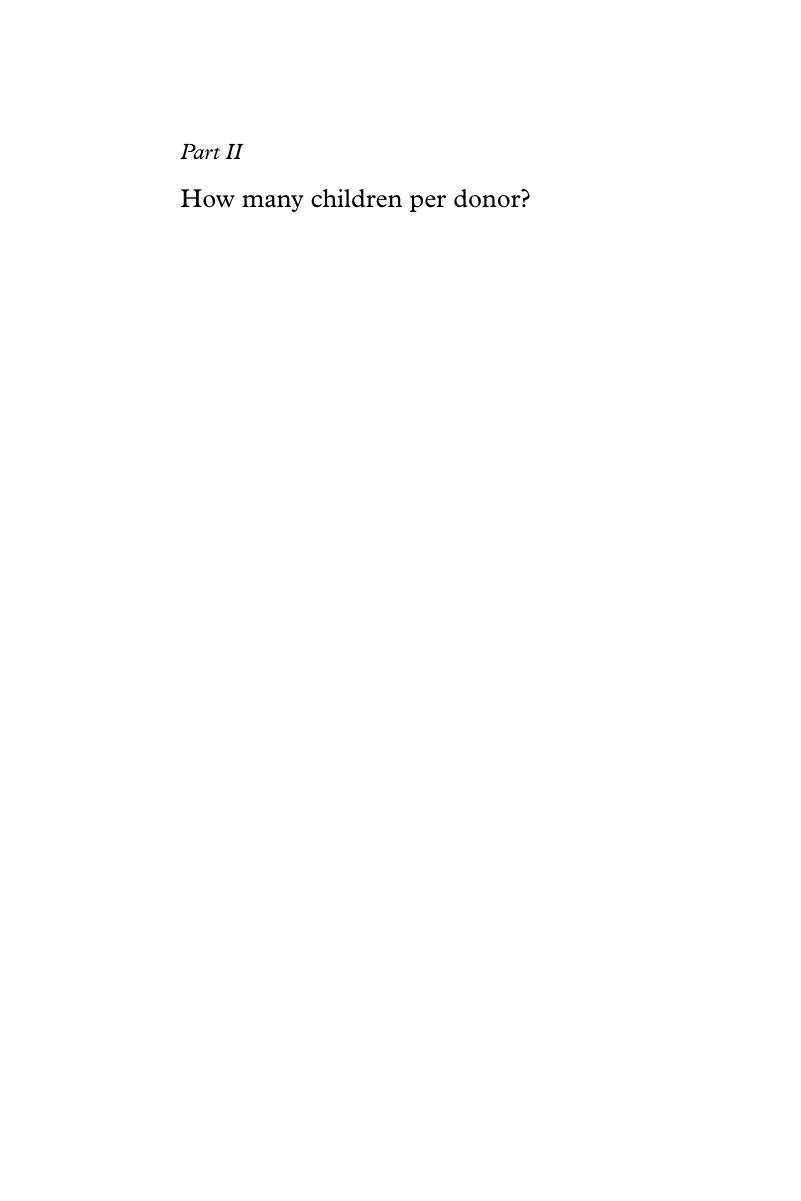Book contents
- Regulating Reproductive Donation
- Regulating Reproductive Donation
- Copyright page
- Contents
- Editors, contributors and discussants
- Book part
- Introduction
- 1 The development of governance and regulation of donor conception in the UK
- Part I International, cross-border and global issues
- Part II How many children per donor?
- Part III Donors
- Part IV Information about donors
- Index
- References
Part II - How many children per donor?
Published online by Cambridge University Press: 05 March 2016
- Regulating Reproductive Donation
- Regulating Reproductive Donation
- Copyright page
- Contents
- Editors, contributors and discussants
- Book part
- Introduction
- 1 The development of governance and regulation of donor conception in the UK
- Part I International, cross-border and global issues
- Part II How many children per donor?
- Part III Donors
- Part IV Information about donors
- Index
- References
Summary

- Type
- Chapter
- Information
- Regulating Reproductive Donation , pp. 163 - 204Publisher: Cambridge University PressPrint publication year: 2016



